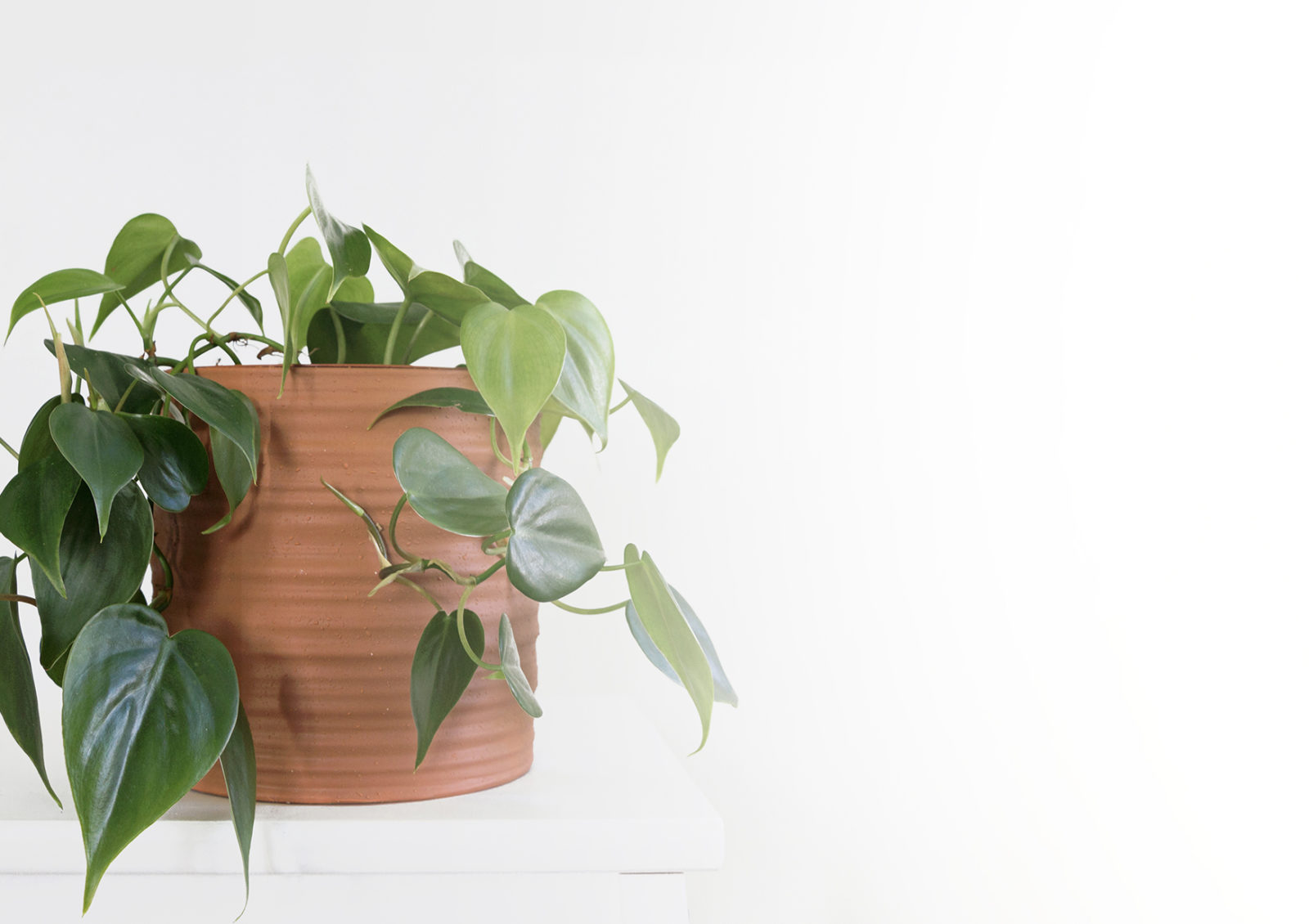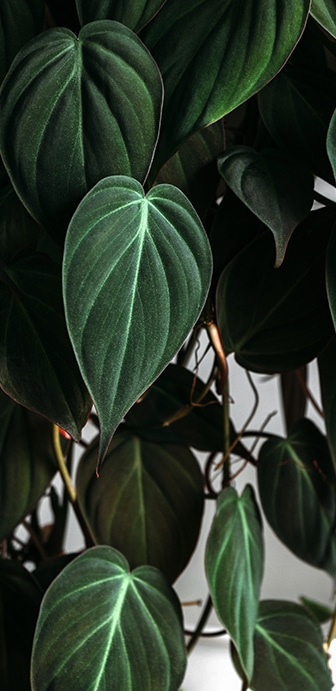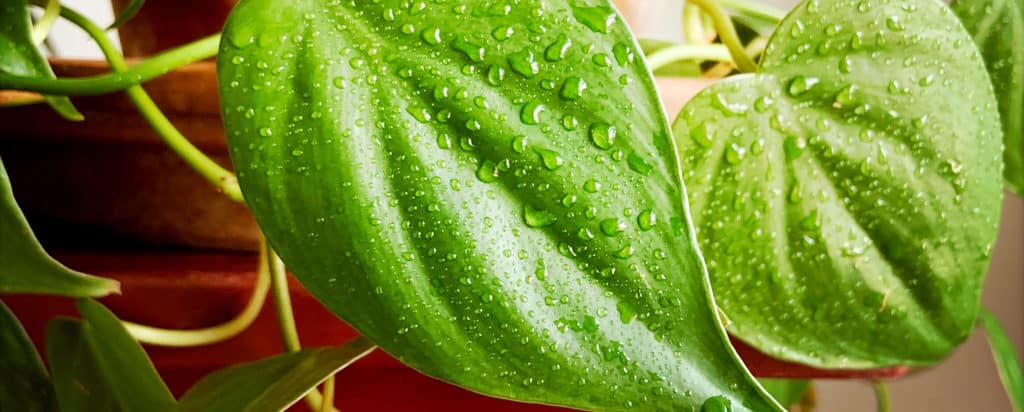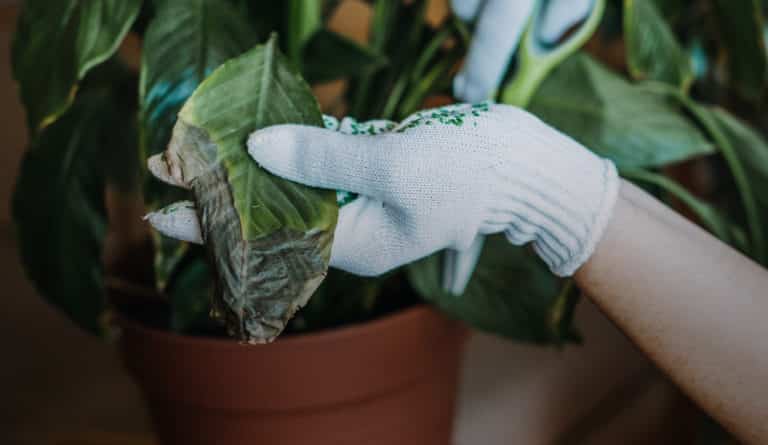
philodendron
aka heart-leaf philodendron, philodendron scandens, philo, sweetheart plant
This adaptable, easy-care plant will climb up your walls, along your shelves, and into your heart! Their leaves are even heart shaped. No wonder it’s one of the world’s most beloved houseplants. Description: Caribbean, central and south America / tropical / many varieties with similar care
variations
Philodendron Hederaceum ‘Brasil’, Philodendron Pink Princess, Philodendron Micans, Philodendron Prince of Orange, Philodendron Birkin, Philodendron Moonlight
light
very flexible
Medium to bright light, but indirect is best. They can even tolerate low light but don’t expect much growth.
water + feeding
avoid overwatering
Make sure the top inch dries out before re-watering. Water less in winter. Feed once a month year-round, especially when it’s in brighter light.
toxic
toxic to humans and pets
Ingestion can cause mouth, stomach irritation and even vomiting.
location
flexible
Settles in nicely to average indoor temperatures. Doesn’t like sudden temperature changes like cold drafts or getting blasted by heater vents.
humidity
loves it
Philodendrons are tropical plants and they appreciate higher humidity.
size
long hanging vines
And we mean long! They can grow 6 to 20 ft in length if you don’t prune them. Consider a moss or coir pole for support.
pro tip
use light to control growth
Put your Philodendron in a bright spot to let it grow. Then move it to a shady spot when you’ve reached your ideal length.
fun fact
natural climber
This “Monkey plant” is happiest when it’s climbing. Out in nature they climb trees to find moist and mossy nooks where they get water through above-ground roots.


beyond the basics
-
soil & potting
Use a rich, well-draining, indoor potting soil, like Miracle-Gro® Indoor Potting Mix. Ensure your pot has good drainage. If you notice water pooling in the drainage tray, empty it.
-
when to repot
Repot every 2 years in the spring, especially with younger plants. Increase pot by 2 inches every time. If dealing with a more mature, fully grown plant you can just replace the top few inches of soil.
-
propogation
If you have a node or aerial root this plant is very easy to propagate. Cut just below the node and remove the lower leaves. Put in water and watch the roots grow in just a few short weeks! For more information on propagation check out our propagation project page!
-
pest control
Prone to mealybugs. Check the underside of leaves regularly when cleaning. Check out our Pest control section in Plant 101 for how to identify and deal with pests on your plant!

troubleshooting
-
yellowing lower leaves?
Low temperatures or drafts are probably the cause. Try moving your plant to a new location where it is clear of any drafts. Philodendrons like it warm, between 60 and 75 F (16 and 24C) It could also be underwatering or under fertilizing. Ensure you’re watering regularly when the top inch of soil becomes dry.
-
leaves dropping?
Probably a cold draft. Move to warm location that’s clear of any drafty windows or the air conditioning vent. It’s a hardy plant but still likes temps between 60 and 75 F (16 and 24C)
-
brown edges on the leaves?
Various. The soil could be too dry. Water regularly when the top inch of soil gets dry. Water until the soil is moist, but not soggy. If the air feels dry and the temp is over 75F (24C,) mist the leaves regularly. Consider a humidifier, or put the pot on a pebble-filled tray of water (making sure the pot is not touching the water). Philodendrons don’t like cold drafts, so this could also be the problem. Move away from cold windows or AC vents.



